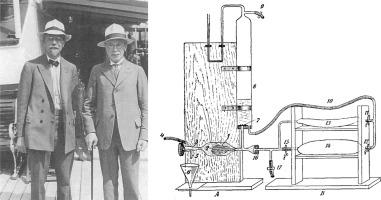Comparative Biochemistry and Physiology A: Molecular & Integrative Physiology ( IF 2.3 ) Pub Date : 2020-12-05 , DOI: 10.1016/j.cbpa.2020.110861 William Joyce 1 , Tobias Wang 2

|
August Krogh pioneered a view of cardiac output that emphasised the rate of venous return, and stressed the importance of changing the filling of the ‘inadequately’ supplied heart, instead of changes in heart rate or cardiac inotropy. Krogh, by and large, presented this concept in three manuscripts published in 1912, which relied on innovative experimental techniques (developed in collaboration with Johannes Lindhard) as well as mathematical and physical models. In this graphical review, we revisit Krogh's original articles, demonstrate how they have stood the test of time, and show how they are relevant to comparative cardiovascular physiology. In doing so, we present an overview of the fundamental, but sometimes counterintuitive, principle that peripheral factors are at least as important as cardiac function in determining cardiac output.
中文翻译:

如何调节心排血量:奥古斯特·克罗格(August Krogh)的原始格顿人式的理解静脉回流的重要性
奥古斯特·克罗格(August Krogh)开创了一种心输出量的观点,强调了静脉回流的速率,并强调了改变“供应不足”的心脏充盈的重要性,而不是改变心率或心脏正性肌力。总的来说,克罗格(Krogh)在1912年出版的三份手稿中提出了这一概念,这些手稿依靠创新的实验技术(与约翰内斯·林哈德(Johannes Lindhard)合作开发)以及数学和物理模型。在此图形审查中,我们将回顾克罗格的原始文章,演示它们如何经受住时间的考验,并展示它们与比较心血管生理学的关系。在此过程中,我们概述了基本原理,但有时违反直觉的原理:外围因素在确定心输出量方面至少与心功能同样重要。



























 京公网安备 11010802027423号
京公网安备 11010802027423号